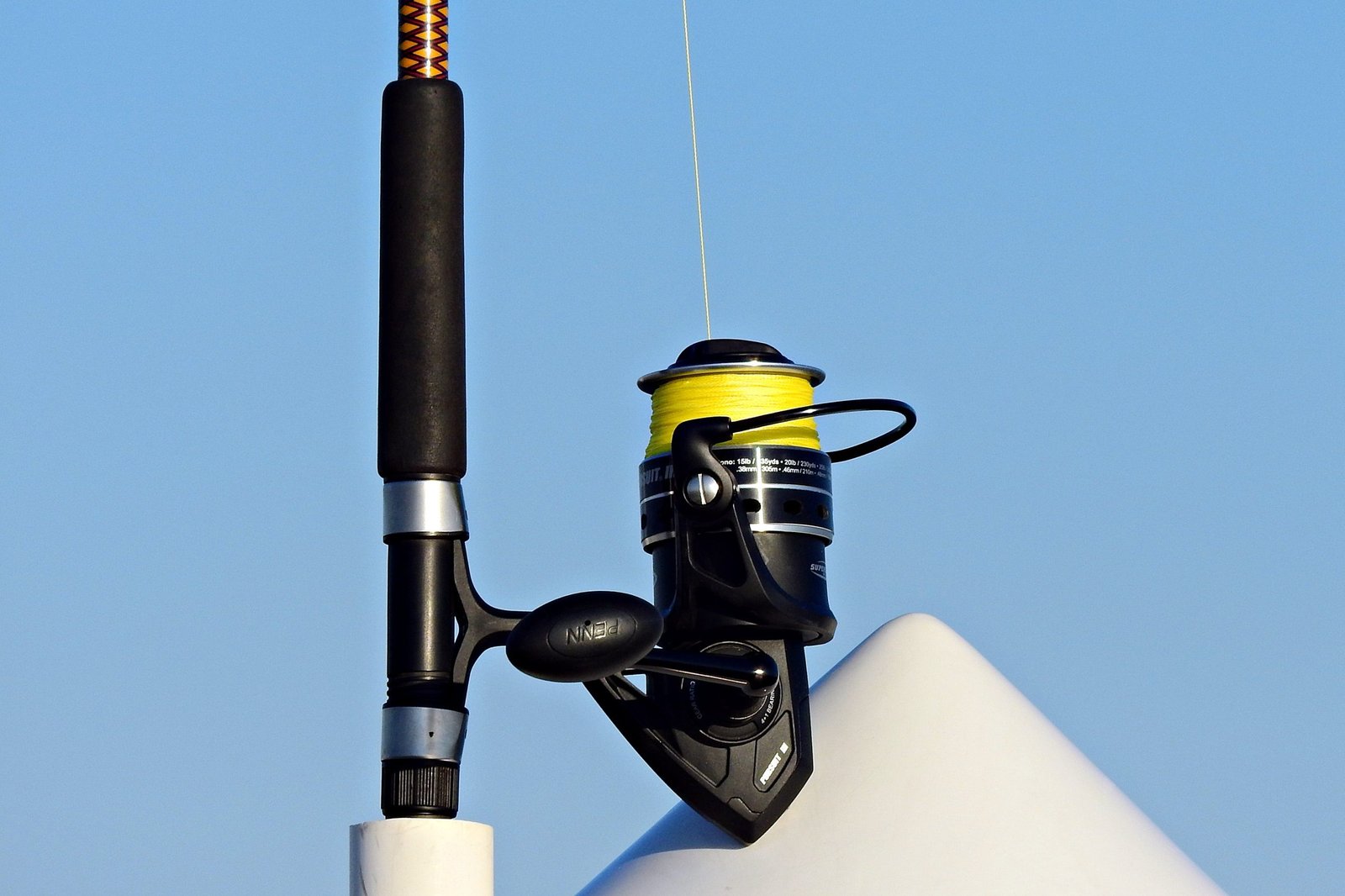
There is a load of information and debate over crankbait lines, so much that it’s actually mind blowing.
There are two main parties out there, the braid and fluorocarbon anglers. Again, a lot of conflicting info out there (even from the same people!).
But this just reminds me that there is a lot of snake oil in the fishing tackle industry. I could write essays on how this sucks from the simplicity of fishing, but let’s get to the point.
The simple answer is a braid + fluorocarbon leader. Best in terms of sensitivity and stealth, as well as sinking properties.
Using the right fishing line can enhance your cranking technique and increase your catch rate. Whether you choose fluorocarbon or braided line, understanding their strengths will help you make the best decision for your fishing trips.
Even if you’re not much of a fishing nerd, your gear matters. So let’s dive deeper into selecting the perfect line for crankbaits.
Braid Vs. Fluorocarbon – The Big Debate
When it comes to choosing a fishing line for crankbaits, braid and fluorocarbon each have their strengths.
Braid is thinner, which means less resistance in the water. This helps your crankbait dive deeper and move more freely. It also allows for quicker, sharper movements, which is great for attracting fish.
With straight braid, you’re going to feel every bump and bite out there, but some experience less fish caught with it.
That’s when the braid + fluorocarbon combo comes in. It offers the stealth of fluorocarbon while retaining much of the sensitivity of braid. But the grass ain’t all green here either. See how I said “much of the sensitivity”? Yeah, the lost sensitivity is too big of a downgrade to some.
There is also the treble hook problem. Braid, from having no stretch, often results in lost fish. This is primarily a problem while slight lip hooking, but it can be solved through heavy gauge hooks.
Fluorocarbon, on the other hand, sinks, which may lead some to believe it performs better. However, when cranking, there’s constant tension on the line. This means the line doesn’t sink much, making braid a more effective choice for getting your bait deeper.
Here’s a quick comparison:
| Feature | Braid | Fluorocarbon |
|---|---|---|
| Diameter | Thinner | Thicker |
| Depth Capability | Better due to less resistance | Limited by tension |
| Sensitivity | Great for detecting bites | More sensitive on slack line |
| Cost | More durable, long-lasting | Needs frequent replacement |
In heavy vegetation, braid shines as it easily cuts through weeds and helps rip your bait clean. It does not stretch as much, providing better control and sensitivity during retrieves.
Monofilament: Where Does It Sit?
))/1110776.json)
Since the big debate is between braid and fluorocarbon, let’s talk a little about monofilament.
The pros and die hard anglers won’t even consider it. That’s mainly because of the rod they’re using. After investing couple hundred bucks in a specialized crankbait rod (think about the flimsy soft yet durable rods), monofilament has no place in their setup.
But if you’re using a heavier power rod (MH-H), monofilament might work just fine.
Think about it this way. Crankbait fishing must involve some stretch, somewhere (in the rod or line). Because crankbaits use treble hooks, you need that extra second before feeling the bite, so you don’t set the hook too soon.
So when you’re using a specialized expensive rod paired with a low stretch line, the rod compensates for the lack of stretch. The opposite happens with monofilament. The line has the stretch, and the rod compensates with stiffness.
And that’s pretty much it with monofilament. If you’re not into using lines more expensive than your reel, mono will work with the average rod.
Crankbaits and Fishing Line Basics
When you fish with crankbaits, picking the right line is essential for success. Different types of crankbaits require specific line characteristics to perform well. Understanding the types of crankbaits and fishing lines helps you maximize your catch.
Types of Crankbaits: Shallow to Deep-Divers
Crankbaits come in various designs, mainly categorized as shallow, medium, and deep-diving. Each type is meant for different water depths and structures.
Shallow Crankbaits: These are ideal for areas with less than 6 feet of water. A common choice is the squarebill, which deflects off obstacles like rocks and logs.
Medium Diving Crankbaits: These usually dive between 6 to 12 feet. They work well when fish are positioned at different depths, allowing you to cover more water.
Deep-Diving Crankbaits: These reach depths over 12 feet, perfect for exploring deeper structures. They pull fish from the bottom and can target specific strike zones.
Lipless Crankbaits: These sink and are versatile for various depths, making them great for quick retrieves.
Choosing the right crankbait type based on the depth and structure increases your chances of getting bites.
Fishing Line Types: Fluoro, Mono, and Braid
Fishing line plays a crucial role in how your crankbait behaves underwater. You have a few options, each with its advantages.
Monofilament (Mono): This line is known for its flexibility and ease of handling. It absorbs shocks well and is great for shallow water fishing. Use a 10- to 14-pound test for most crankbaits.
Fluorocarbon (Fluoro): This line is less visible in water, making it a good choice for clear conditions. It sinks, allowing your crankbait to dive deeper. A 12- to 15-pound test is common for deep-divers
Braided Line: Known for its strength and thin diameter, braid allows you to achieve great casting distance. It’s excellent for covering more water but requires a leader, especially in clear water.
Selecting the right fishing line type helps enhance your crankbait’s action, targeting fish effectively.
Selecting the Best Line for Crankbait Fishing

When it comes to crankbait fishing, choosing the right line plays a vital role in your success. You should focus on the line’s stretch, sensitivity, strength, and resistance to abrasion to ensure you are prepared for any situation.
Importance of Line Stretch and Sensitivity
Line stretch is important because it affects how you feel bites and set hooks. Crankbaits often come with treble hooks that require a solid hookset. A line with low stretch, like fluorocarbon, offers better sensitivity. This way, you’ll know immediately when a fish bites.
Using lines like Seaguar InvizX or Sunline Sniper can provide that low stretch while also being suitable for various depths and conditions. The right diameter will help your crankbait reach the strike zone more efficiently, which is crucial for catching bass and other species. Remember, less stretch means better hooksets and improved catch rates.
Line Strength and Abrasion Resistance
))/2238549.json)
Choosing the right pound test ensures that your line can handle big fish and rugged conditions. A range of 10- to 14-pound test line is commonly recommended. If you’re fishing around cover, consider bumping up to a 14-pound line for added strength.
Abrasion resistance is also key. When fishing near rocks or heavy vegetation, you want a line that can withstand wear and tear. Look for lines labeled as abrasion-resistant. This will prevent breakage during critical moments, allowing you to fish confidently without worrying about losing that big catch. The combination of strength and abrasion resistance will keep your fishing lines intact through tough situations.
Advanced Considerations for Line and Lure Performance
When fishing with crankbaits, choosing the right line is crucial to match the conditions you’ll face. Understanding how line affects lure performance can enhance your success. Consider factors like water clarity, surrounding structure, and vegetation to ensure your gear is optimized.
Matching Line Choice with Fishing Conditions
Selecting the right fishing line depends on your specific conditions. For clear water, consider using a fluorocarbon line, which can help your lure appear more natural. In dirty water, a brighter line like orange or yellow can be effective, as it offers better visibility for you while still attracting fish.
In heavy vegetation, a braid line is a solid choice. It is strong and has low stretch, allowing for better control when navigating through grass and wood. If you’re fishing in areas with structure, consider a line with higher pound test. For example, a 20- to 30-pound test braided line can protect against snags.
Techniques for Maximizing Bait Action
To get the most out of your crankbaits, focus on your retrieve technique. A moderate gear ratio reel can provide a steady retrieve speed, enhancing the bait’s wiggle and wobble action. Start with a steady retrieve, and then vary your speed to see what triggers more strikes.
You can also experiment with line memory. New lines may have some memory, affecting how your lure tracks underwater. Stretch and work out the coils before fishing to minimize this. Adjust your rod angles to change how the crankbait swims. Try steep angles for a deeper dive and shallower angles for a more subtle approach.
By pairing the right line with thoughtful techniques, you can significantly improve your fishing experience with crankbaits.
Frequently Asked Questions
Here are answers to some common questions about fishing line choices for crankbaits. This information can help you select the right line for your fishing needs.
What type of line is recommended for fishing with squarebill crankbaits?
Monofilament is often recommended for squarebill crankbaits. It is flexible and sinks slowly, which helps create a better action in the water. You should consider using a 10- to 12-pound test line for optimal performance.
Is fluorocarbon line a good choice for fishing with crankbaits, and why?
Fluorocarbon line can be a good choice for crankbaits, especially if you need added depth. It is less visible underwater, which can help when fishing in clear water. This type of line also offers good sensitivity for detecting bites.
What are the advantages of using braided line for crankbaits?
Braided line is incredibly strong and abrasion-resistant. It has no stretch, which allows for better hook-setting. This can be useful when fishing in heavy cover. However, it may be less effective in terms of bait action compared to monofilament or fluorocarbon.
Can monofilament line be effectively used for crankbait fishing?
Yes, monofilament line can be very effective for crankbait fishing. It is easy to handle and provides good shock absorption. This makes it a popular choice for various crankbait types, including deeper and lighter models.
How does the pound test of fishing line affect crankbait performance?
The pound test affects how deep your crankbait dives and its overall action. A lighter test, like 10-pound, can help get the bait deeper. A heavier test, like 14-pound, might work better for fishing in cover but may limit some of the bait’s action.
What should I look for in a rod and reel setup when fishing with crankbaits?
When choosing a rod and reel setup for crankbait fishing, look for a medium to medium-heavy rod. This will give you the right balance of sensitivity and strength. Pair it with a reel that has a good gear ratio for smooth retrieval and casting distance.





Pingback: Best Fishing Line for Baitcasters: Top Picks for Smooth Casting – DailyFishers